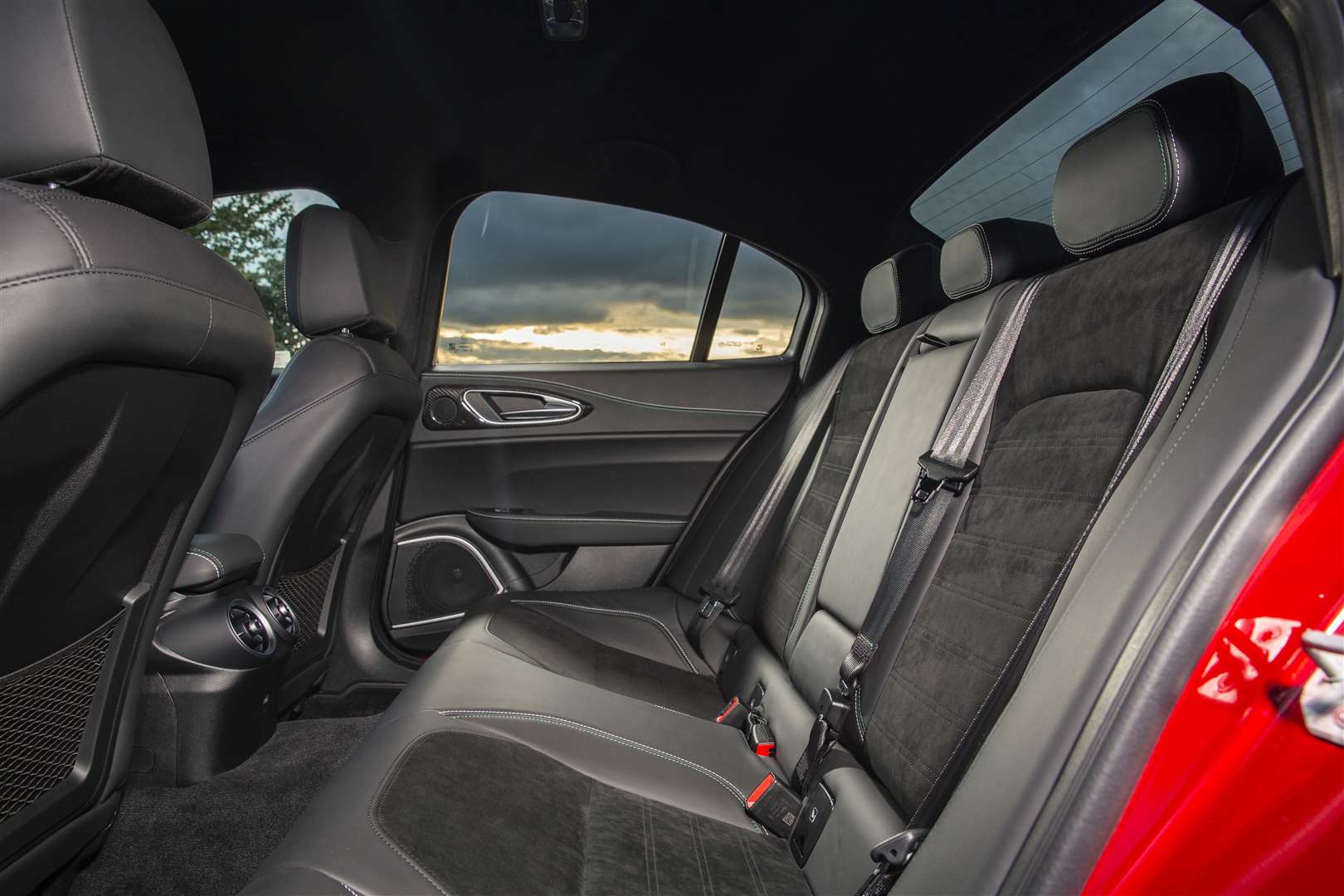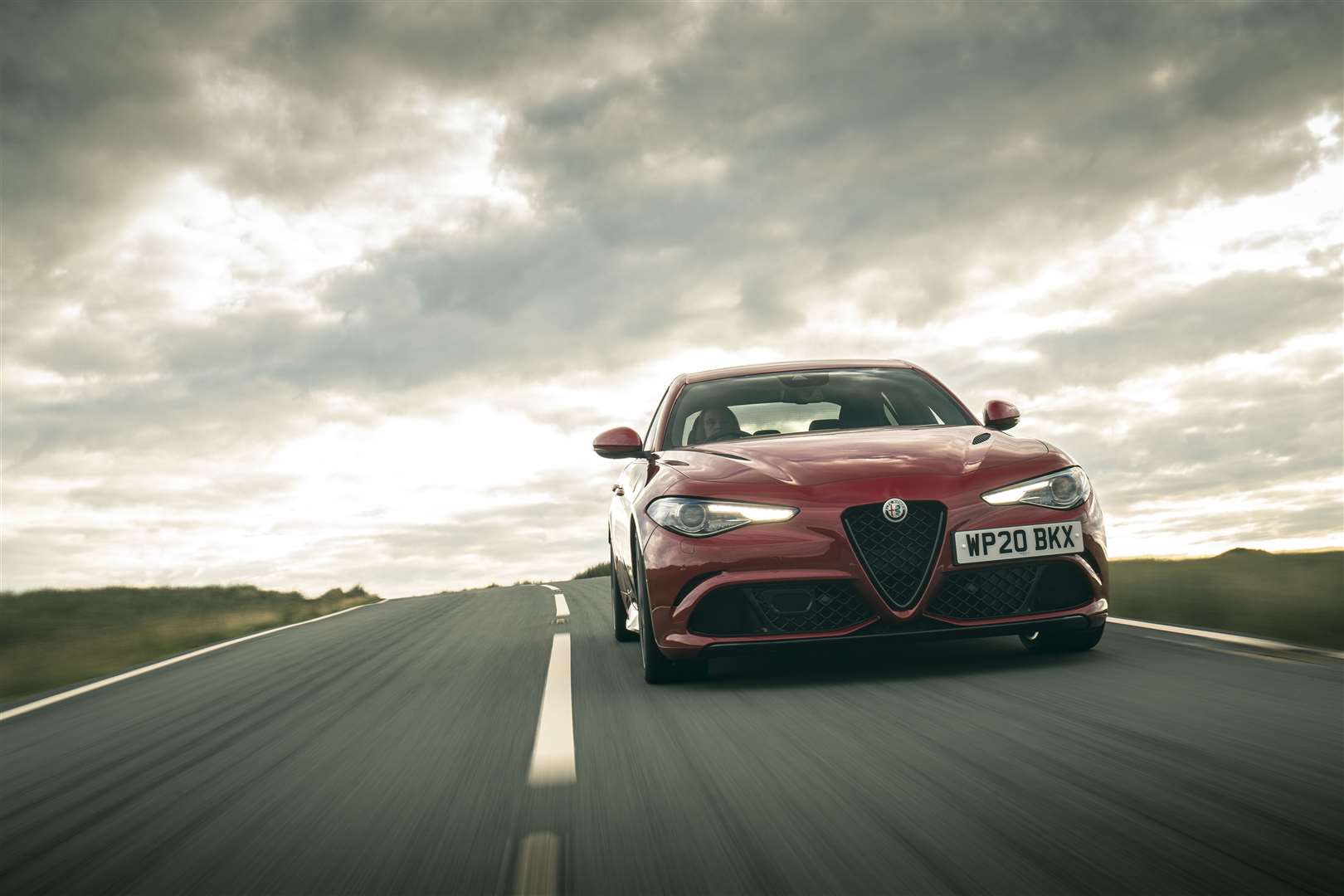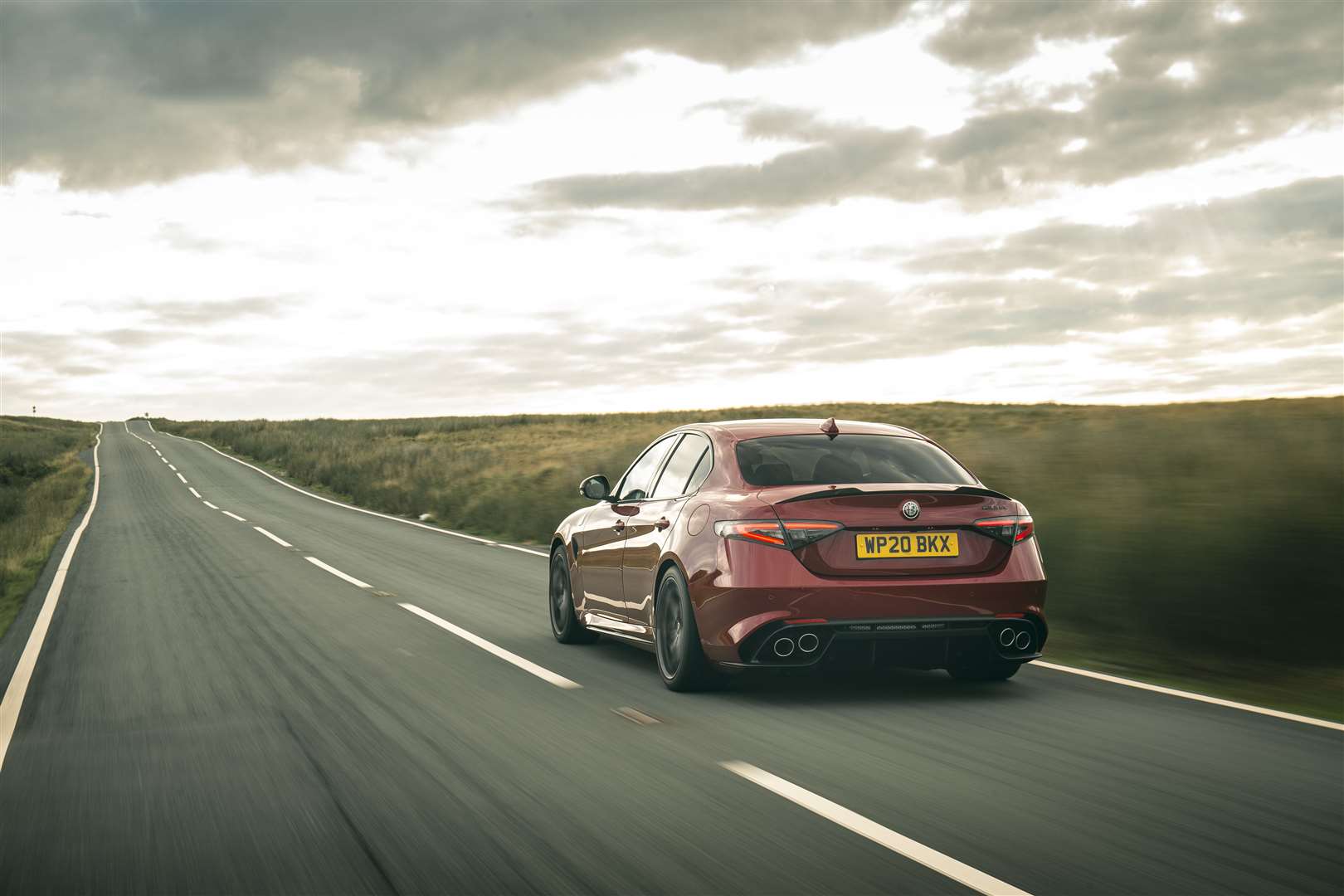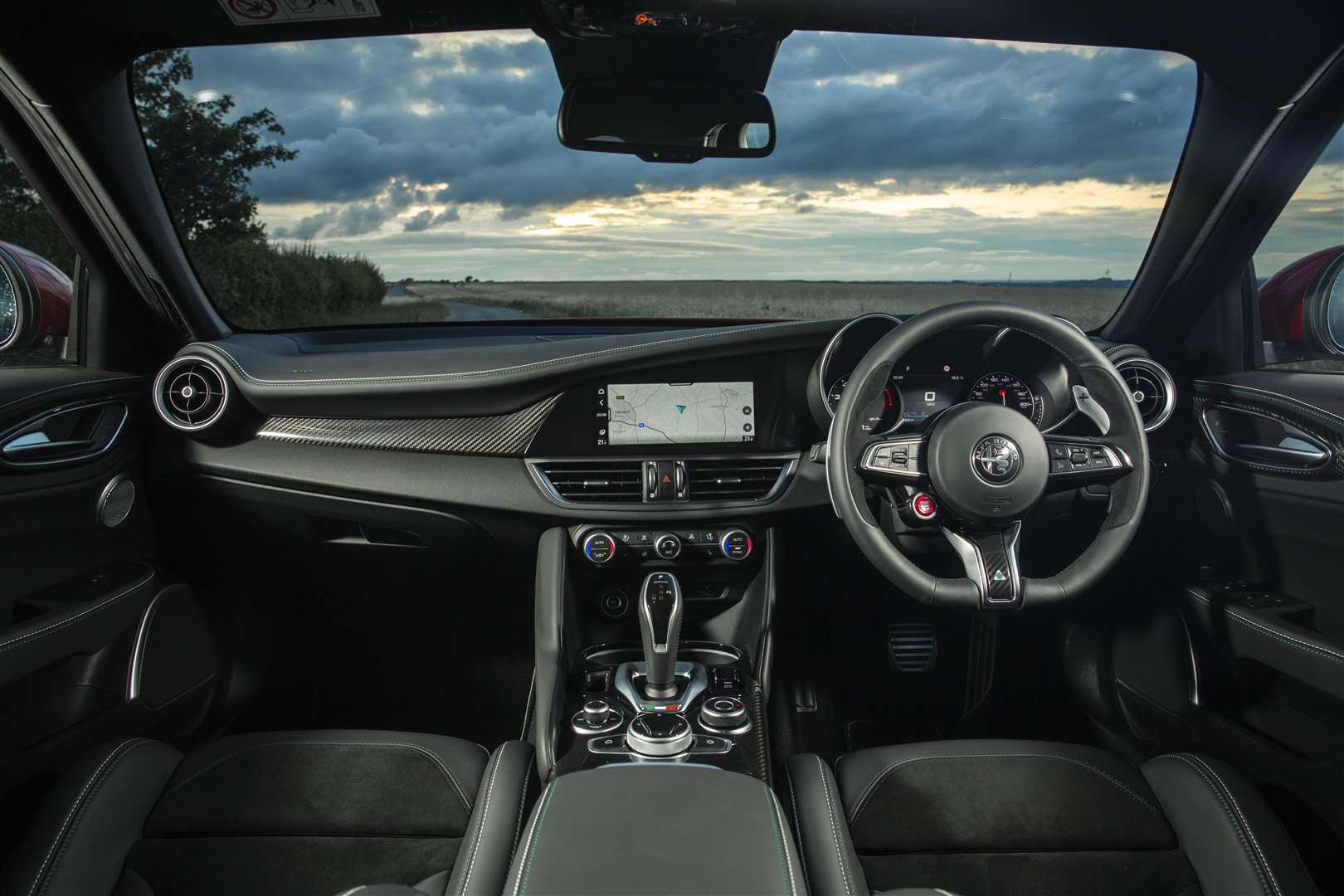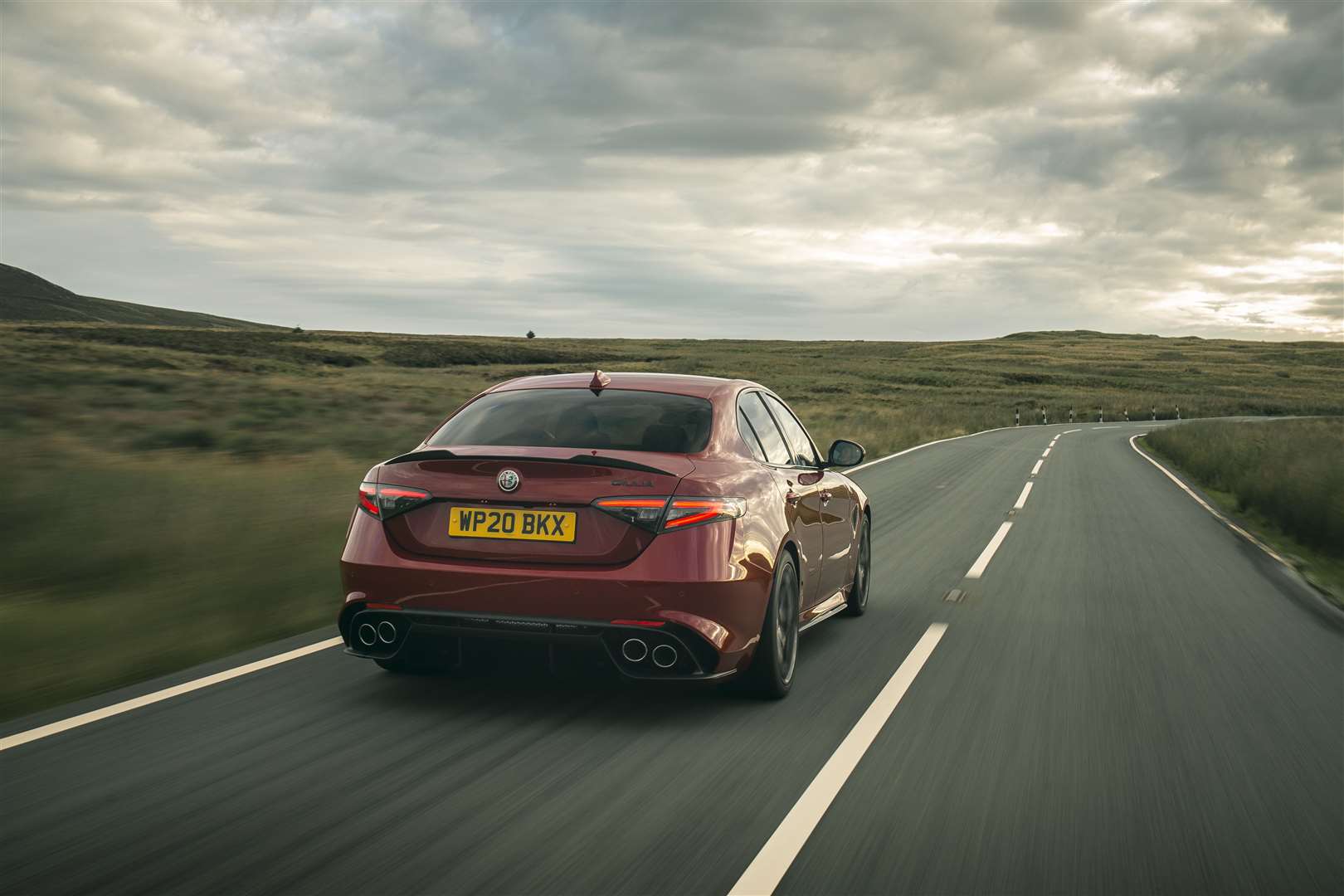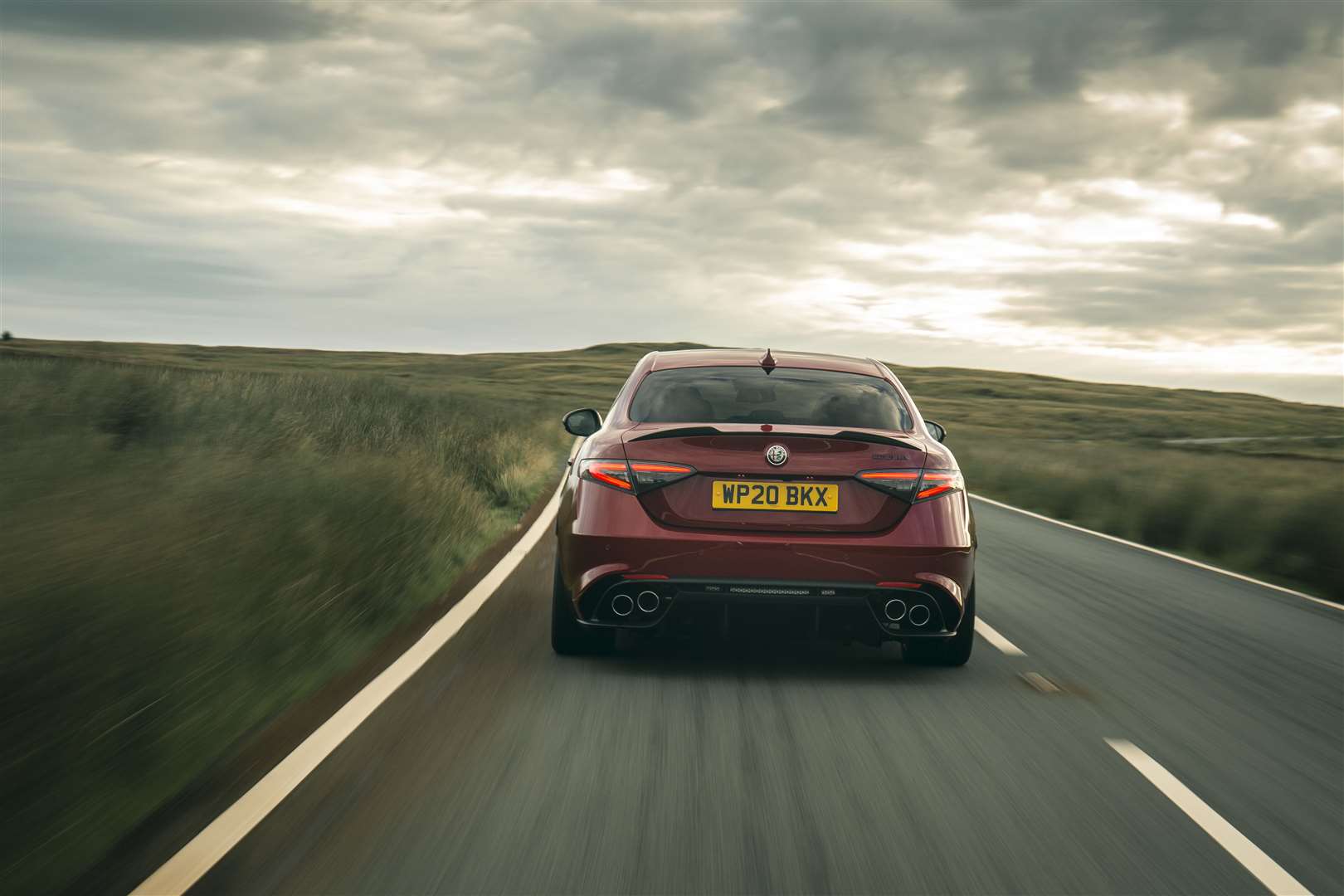Home News Kent Motors news Article
Alfa Romeo Giulia Quadrifoglio 2.9V6 bi-turbo 510bhp
08:51, 27 November 2020
updated: 08:52, 27 November 2020
If you think there is a better-looking saloon car on the market today than the Alfa Romeo Guilia you’re wrong and, no, I’m not going to listen to your side of the argument. The thing is, as gorgeous as the standard car is, it really needs a little more go to match the show and live up to its sports saloon aspirations.
Fortunately Alfa were only too happy to oblige with the Quadrifoglio. For those of you not in the know, Quadrifoglio is Italian for four leaf clover and the moniker is only assigned to the firm’s most powerful models and this particular car is more than deserving.
It uses the same lightweight rear-wheel-drive body-in-white as the standard car but the Quadrifoglio is powered by a 2.9-litre V6 petrol engine fitted with two turbochargers. It’s a beast of an engine with 503bhp that will propel the Quadrifoglio to 62mph in just 3.9 seconds on the way to a – where legal – 190mph top speed.
And, ecause Alfa cares about the welfare of the people who buy its cars there’s bespoke suspension, quicker steering and larger brakes to help drivers keep it on the black stuff.
I’ll start by talking about how it goes because, well, that’s what this car, and indeed any performance car, is all about after all.
The Giulia Quadrifoglio is, to put it bluntly, a stonking machine. That information is probably all most of you will need to know but I’ll add a little more detail, just in case.
The 2.9-litre V6 is, unsurprisingly, the highlight of the driving experience. The response when you press the accelerator is instantaneous. Put your foot down and the car will surge forward relentlessly and with almost zero lag, despite its heavy reliance on turbochargers.
The eight-speed automatic gearbox stutters and hesitates a little at lower speeds around urban environments but, once the pace starts to pick up, it’s a very different proposition with barely perceptible lightning-quick changes when you use the deliciously tactile, and usefully large, aluminium paddles that are mounted on the steering column.
There are four driving modes to choose from rather than the three you’ll find in the standard car. In addition to the DNA – Dynamic, Normal and Advanced Efficiency – modes you are also blessed with a Race mode. It might not surprise you to learn that it’s in Race mode that the Quadrifoglio produces its finest work. The accelerator and engine response it at its sharpest and the accompanying soundtrack as the exhaust barks and crackles as you flick through the gears and the revs rise is a feast for the ears.
The standard brakes are immense, boasting phenomenal stopping power, and there’s optional ceramic brakes if you really do need more. They’re not perfect, however, thanks to a system that relies on electronics rather than hydraulics the brake pedal is a little vague at the top of its travel.
There’s real magic in the way that it rides and handles though. The adaptive suspension can be softened up in all but race mode so even while you’re sprinting across the countryside tackling tight and twisty roads the ride remains compliant and cushioning, isolating the occupants from sharp ridges and broken sections of tarmac.
A trick differential on the rear axle helps reduce wheelspin but doesn’t eliminate it altogether so if you want to hang the back end out on a bend – something you should, of course, only do on a track – and steer with the accelerator then it is entirely possibly to do just that.
Leave the suspension in its firmest mode and body roll is almost non-existent, allowing you to make full use of the prodigious grip and quick, precise steering. The Quadrifoglio is alert and agile but always composed. Flick the steering wheel to change direction and the car responds to your input effortlessly, inspiring confidence and providing more than a few reasons to smile, broadly.
It goes like the clappers, that much is clear, but what’s it like to spend time in the car while it’s being driven like the clappers? Very pleasant, as it happens.
The standard-fit electrically-adjustable driver’s seat is set low behind a pair of well-positioned pedals giving a sporty feel to proceedings. There’s lots of adjustment in the narrow-rimmed steering wheel so there’s no reasons for anyone not to feel at home in the driver’s seat. You can if you’re happy to part with a substantial sum of money, opt for carbon fibre seats.
There is, as you would expect, lots of leather, machined aluminium – the paddles are deliciously tactile – and carbon fibre on display across the cabin that helps give the passenger space a purposeful ambiance.
The Giulia underwent a facelift this year which added more carbon fibre, a higher-quality flat-bottomed steering wheel and leather-clad gear selector and little details such as the Italian flag motif at the bottom of the shifter. Efforts were also made to improve the ergonomics and quality of the controls so everything has a more positive, more robust, feel.
The infotainment system has been updated too and now it can be controlled using either the 8.8in screen or the dial on the centre console. You can even use the touchscreen to drag and drop icons to create a customised homescreen.
The graphics are a little underwhelming and the display could be brighter. It’s not the most responsive system either but it does boast Apple CarPlay and Android Auto as standard. There’s also a Performance Pages feature that shows things like turbo pressure, power output, a lap timer and the temperatures of core mechanical components in real time.
The Giulia isn’t the easiest car to enter or exit thanks to the relatively low roofline and low-set seats but, once you are in, you should be relatively comfortable whatever your shape or size. The front seats are quite wide and there’s lots of room for elbows and shoulders.
Storage options are good, with lots of cubbies to store all the bits and pieces that car owners inevitably accumulate, including a decent-sized bin under the centre armrest and a reasonably large glovebox.
Rear-seat passengers will enjoy a decent amount of leg room – there’s even room for feet beneath the front seats – but taller passengers will certainly have cause to rue the lack of headroom.
The thing is, and I apologise to anyone who ends up riding as a passenger in the Giulia, but if you’re buying a performance saloon practicality might be important, but never as important as how the car drives, and the Quadrifoglio drives beautifully. It is remarkably comfortable across broken surfaces while remaining sure-footed and predictable. It is well-equipped with a whole raft of safety features to help prevent you getting into too because trouble, something that is entirely possible because it is also blisteringly quick.
I dare you to be disappointed.
Alfa Romeo Giulia Quadrifoglio 2.9V6 bi-turbo 510bhp
Price: £67,195
As tested: £72,055
Engine: 2.9-litre V6 bi-turbo petrol
Transmission: 8-speed automatic
Max power: 510bhp
Max torque: 600Nm @ 2,500rpm
Max speed: 191mph
0-62mph: 3.9sec
Fuel consumption (WLTP) mpg -
Low: 17
Medium: 27.4
High: 31.4
Extra high: 29.1
Combined: 27.2
Emissions: (CO2): 236g/km
For more information visit www.alfaromeo.co.uk
Latest news
Features
Most popular
- 1
‘This rat-run bridge isn’t wide enough - someone will be killed soon’
- 2
Boy, 16, found safe after going missing nine days ago
2 - 3
Only shop in village to shut this week as ‘devastated’ couple leave Kent
16 - 4
A-road shut in both directions after water main bursts
- 5
Mum joined teen son in smashing up ex’s family home and car


